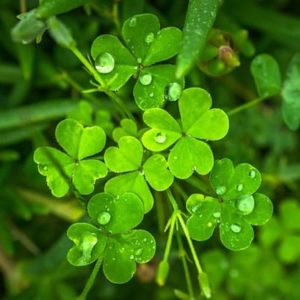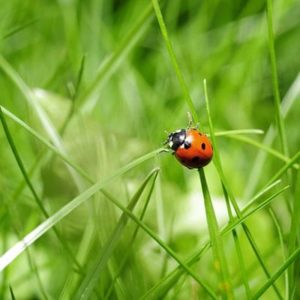When you think of your yard and lawn, what comes to mind? A calm, peaceful suburb? Lawn games like bocce ball? All the time spent mowing and maintaining it?
You might be surprised to learn that lawns are a fairly recent addition to the United States, growing in popularity after World War II with the advent of suburbs and the invention of affordable lawnmowers.
Why Do We Have Lawns?
Lawns, for many years, were a status symbol of wealthy landowners in England. The landowners had gardeners at their disposal to plant and maintain varieties of grass – useless for food or profit – around their castles and estates. The grass thrived in the damp English climate, and the servants of the estate often used scythes to maintain a short, neat height. In less affluent communities, the lawns were a food source for grazing livestock (who, in turn, fertilized the area). Some scholars have pointed out that tree-free landscapes around castles made it possible to spot intruders from far distances. Sports such as tennis and lawn bowling (and golf in Scotland) added to the prevalence of lawns on wealthy manors.
When soldiers returned to the USA after World War II, homes were built rapidly to keep up with demand. Houses were mass-produced in rapid succession, and lawns started being offered as part of the package for the American Dream. Fast-forward to today, where a yard of super-green grass rivaling a golf course is seen as the way to keep up with the Joneses.
So why is this a problem?
Problems With Lawns
Clover Became a “Weed”

Lawns used to be judged by the quality of clover in them – the more clover seed, the better. Seed mixes were actually considered incomplete if they did not include some version of clover.
As weedkillers and herbicides became the most affordable way to battle weeds, clover became an innocent bystander. No formula could kill weeds and maintain clover, so companies solved this “problem” by classifying clover as a weed.
However, with the resurgence of organic lawn care, the importance of clover in lawns is being rediscovered. Clover deters pests, creates its own food, tolerates drought well, and is immune to most diseases. It also takes nitrogen, a needed nutrient, from the air and deposits it in the soil. A lawn that includes clover is more likely to be green and healthy.
Learn More – Clover in the Lawn: Good or Bad?
We’re Locked in a Never-Ending Fight Against Weeds
Weeds are a symptom of a deeper problem, yet modern lawn care practices poison, burn, or pull out weeds rather than treating the root (pun intended) cause.
For instance, if you have a proliferation of dandelions in your yard, your soil might need more calcium and less magnesium. If the weed known as plantain keeps popping up, you might have clay soil that is not well aerated.
In contrast, an organic lawn care program looks at the entirety of your lawn’s health, instead of just treating individual symptoms.
Insects Are “Bad” And Should Be Killed

Healthy lawns have some insects, similar to healthy trees or gardens. While some insects are pests (and can be organically treated if necessary), others actually help your lawn to thrive by providing air, nutrients, and more. Most lawns and yards have natural pest control – ladybugs, spiders, and praying mantises eat bugs and don’t damage lawns.
Yet modern lawn care techniques involve the indiscriminate application of pesticides to eliminate insects from the lawn. By killing off the “good” insects, it starts a vicious cycle – the destructive insect pests tend to multiply more quickly than the beneficial insects, leading to noticeable damage. We then apply more pesticide, killing everything. As the cycle repeats over and over, the pests keep coming back while the beneficials disappear, locking us into an endless need to spray toxic chemicals all over our lawn.
Bare Spots on Your Lawn
One of the reasons that weeds might spring up quickly in your yard is if there are bare patches where no grass is growing. Because grass is mown before the grass is able to produce seed, it doesn’t automatically regrow in those bare patches. The solution to this is to add grass seed. Keep in mind that clover (mentioned above) usually prevents these bare areas from appearing.
The Need For Core Aeration
Do you ever wonder why aeration is necessary on a commercially tended lawn? Well, because lawns are walked over, and mown, and treated with chemicals, the ground becomes compacted and the air in the soil is stomped down and removed. This makes it difficult for the grass to thrive.
Core aeration is a method where small parts (plugs) of the ground are removed, allowing the lawn to “breathe.” It also allows water and fertilizer to reach grass roots. In an organically-treated lawn, aeration becomes less and less necessary over time – instead, natural inhabitants such as earthworms aerate the ground as they move through the soil.
In Summary
A lawn isn’t necessarily a bad thing – it all depends on how it’s treated.
You can learn the facts about organic lawns here, including how the process works and what you can expect.
If you’re interested in converting your lawn into an organically-treated one, contact us to get the process started.
GET THE LATEST NEWS
Subscribe to the Organic Plant Care Newsletter and get timely and helpful tips and updates monthly.
There's no spam - we promise!





